Bold & Brilliant: A Guide to High-Impact Outdoor Fall Planters for Sun
This is the garden’s last, great performance. For the spots that still bake in the golden autumn light, we don’t whisper—we roar. We demand drama, resilience, and a blaze of glory that defies the coming chill. This is the realm of the full sun fall planter, a bold statement of color and form that celebrates the final, powerful rays of the season.
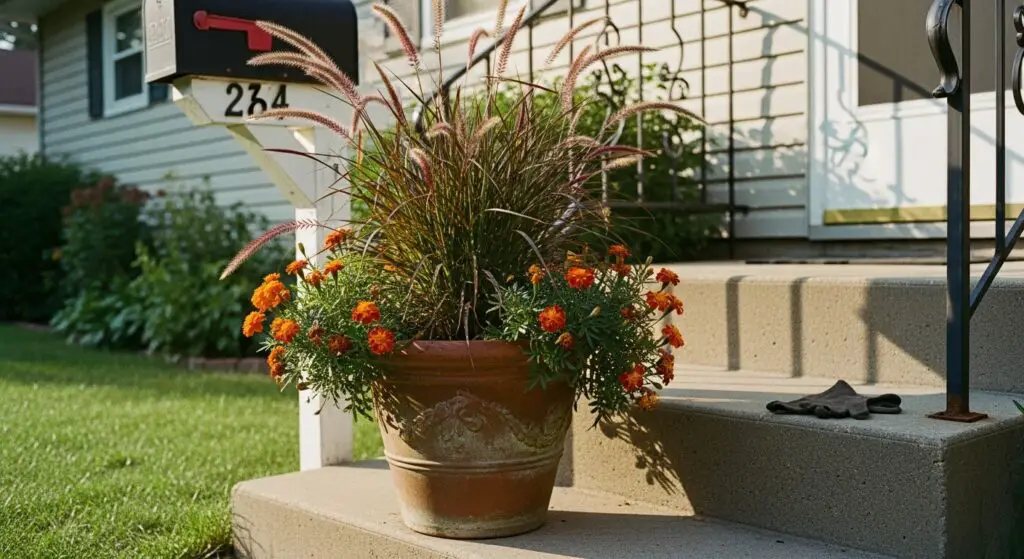
Harnessing the Power of the Autumn Sun
Full sun locations offer something special. Here, you can use a vibrant palette of plants that would languish in shade. These spots—your sun-drenched front walk, that blazing hot patio, those fall exterior planters by the garage—demand tough beauties.
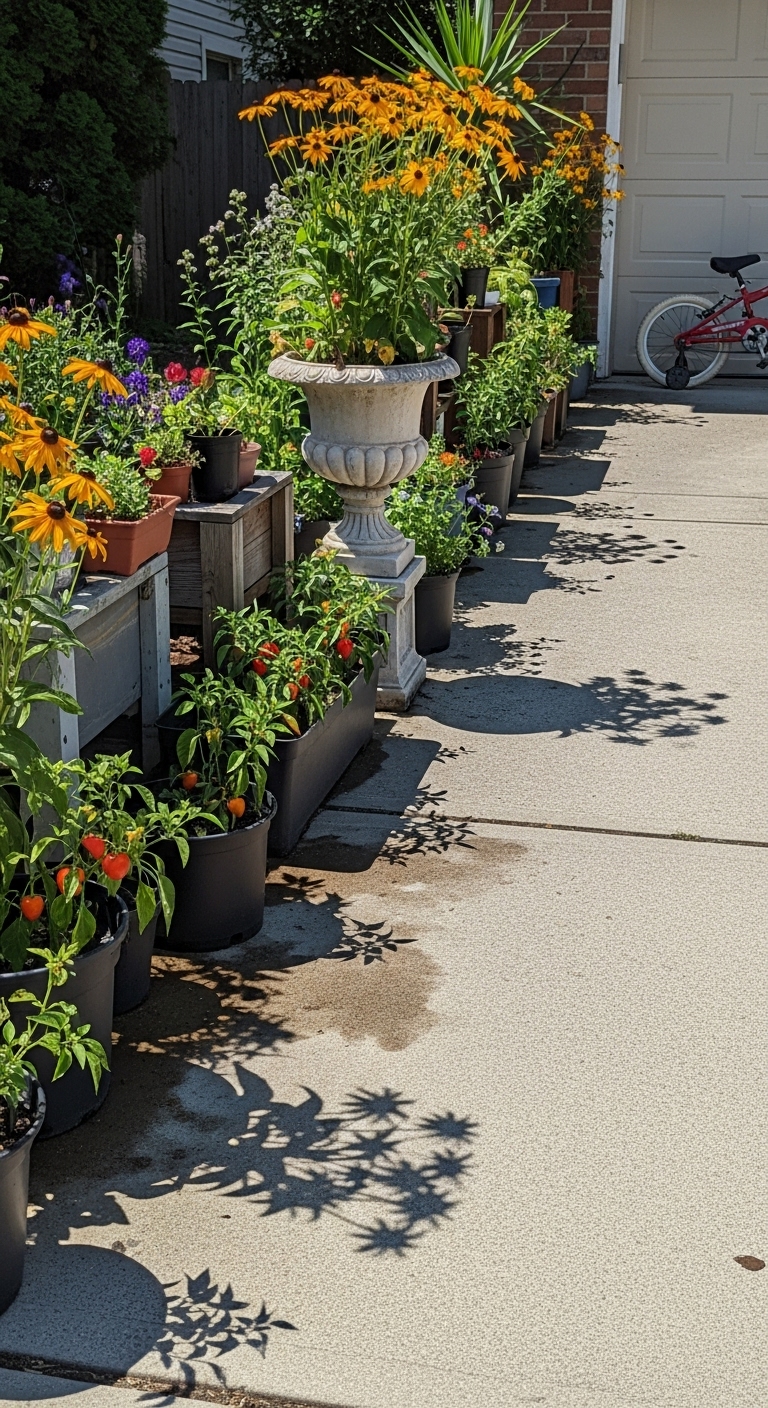
And they deliver. Sun-loving plants produce more intense colors. Their blooms last longer. They stand up to wind and weather better than their shade-dwelling cousins.
But here’s what most people get wrong. They treat sunny spots like afterthoughts. They stick a sad mum in a pot and call it done. Or worse, they give up entirely, thinking nothing can handle that brutal afternoon sun.
Wrong.
Fall planters full sun combinations can be spectacular. They just need the right approach. You need plants that laugh at drought. Colors that pop against bright light. Textures that create drama even when blooms fade.
Think of your sunny planter as a stage. And autumn sun? That’s your spotlight. Now let’s put on a show.
The Core Ethos: Celebratory Endurance

A full sun fall planter celebrates abundance and strength. It’s designed as a focal point, drawing eyes with saturated color and dynamic forms. The goal? Create compositions as tough as they are beautiful—spectacular from September’s warm days through November’s first hard frost.
Color Saturation
Use sun to your advantage. Bright light washes out pale colors. So go bold. Choose plants with deep, rich hues that intensify under strong rays. Burgundy mums beat pink ones. Deep orange marigolds outshine pale yellows. Purple fountain grass trumps green varieties every time.
Sun also brings out subtle color variations. Watch how ornamental cabbage leaves develop deeper purples after cool nights. See how sedum flowers shift from pink to rust as autumn progresses.
Structural Integrity
Sun-loving grasses and perennials provide lasting framework. They don’t just fill space—they create architecture. Purple fountain grass adds height and movement. Upright sedums provide solid midground structure. Even after flowers fade, these plants maintain their form.
Structure matters more in sun than shade. Why? Because sun planters are viewed from farther away. They need bold shapes that read clearly from the street or across a patio.
Drought Tolerance
Here’s the truth about low maintenance fall planters. The secret isn’t constant watering. It’s choosing plants that shrug off dry spells.
Select varieties with thick leaves, like sedums. Or deep roots, like ornamental grasses. Or waxy coatings, like kale. These adaptations help plants conserve water naturally.
But drought tolerance doesn’t mean neglect. Even tough plants need water to establish. And container plants always need more water than those in ground. The difference? Drought-tolerant plants bounce back from occasional lapses. Others won’t.
Smart plant choices mean less work. Less panic when you forget to water. More time enjoying your creation instead of babying it.
The Sun-Worshipper’s Plant Library: Your Star Performers

Let’s build your arsenal of outdoor fall planters champions. These plants don’t just survive full sun—they demand it.
Ornamental Grasses: The Undisputed Kings
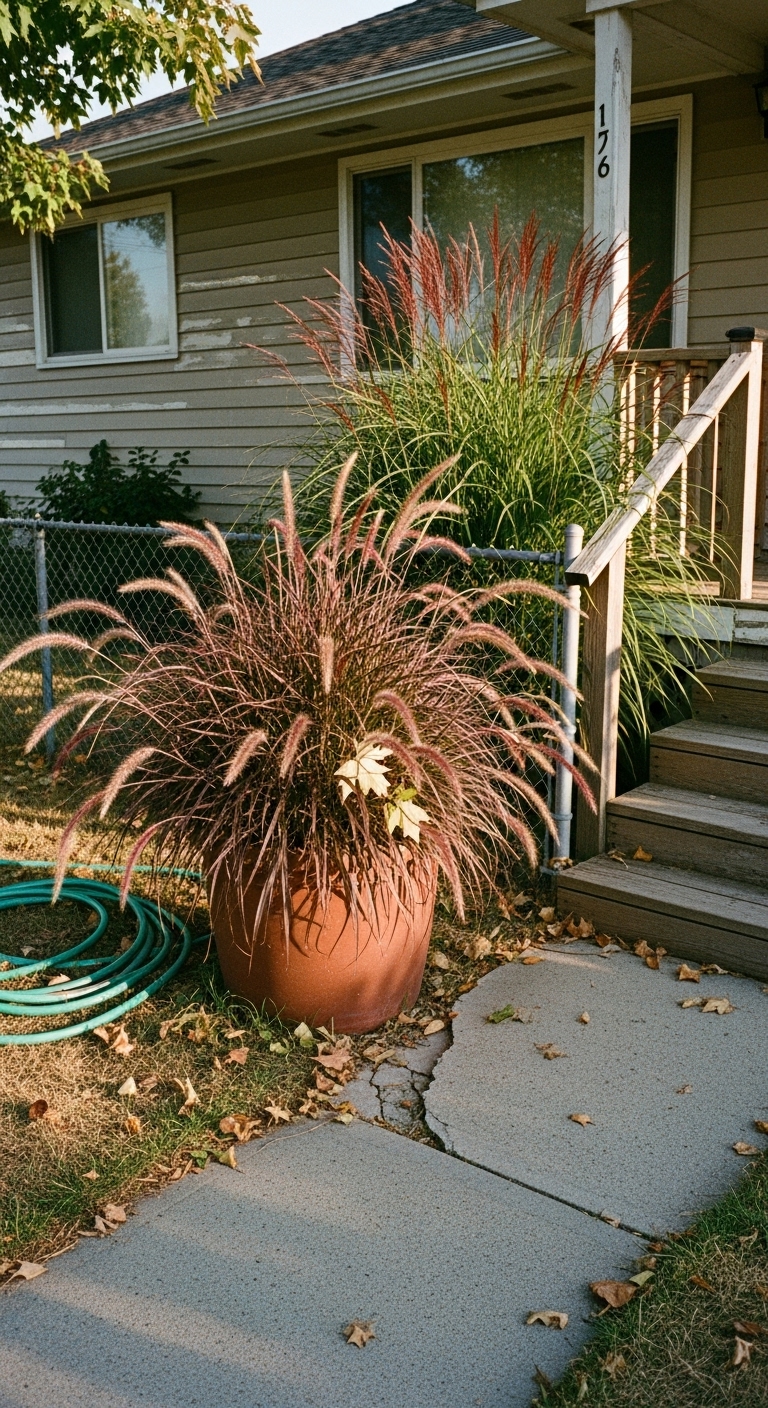
Purple Fountain Grass (Pennisetum setaceum ‘Rubrum’) rules the sun planter world. Those burgundy blades and fuzzy plumes? Pure drama. It grows fast, fills containers quickly, and looks good even when slightly drought-stressed.
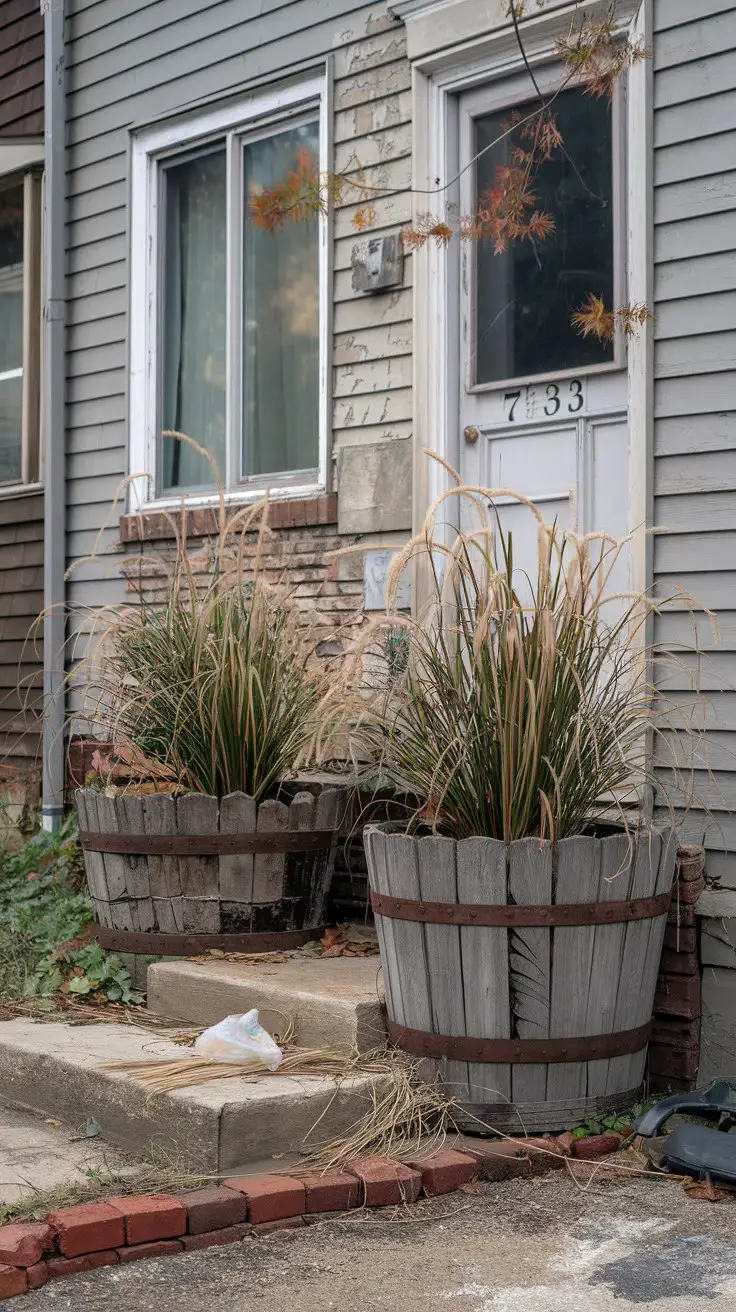
Switchgrass (Panicum virgatum) brings different energy. Stiff, upright stems create vertical lines. Green summer foliage transforms to gold, orange, or burgundy depending on variety. ‘Shenandoah’ turns wine-red. ‘Northwind’ stays blue-green with yellow fall hints.
Both grasses move with every breeze. They catch light differently throughout the day. Morning dew sparkles on their blades. Afternoon sun makes them glow.
Late-Season Perennials
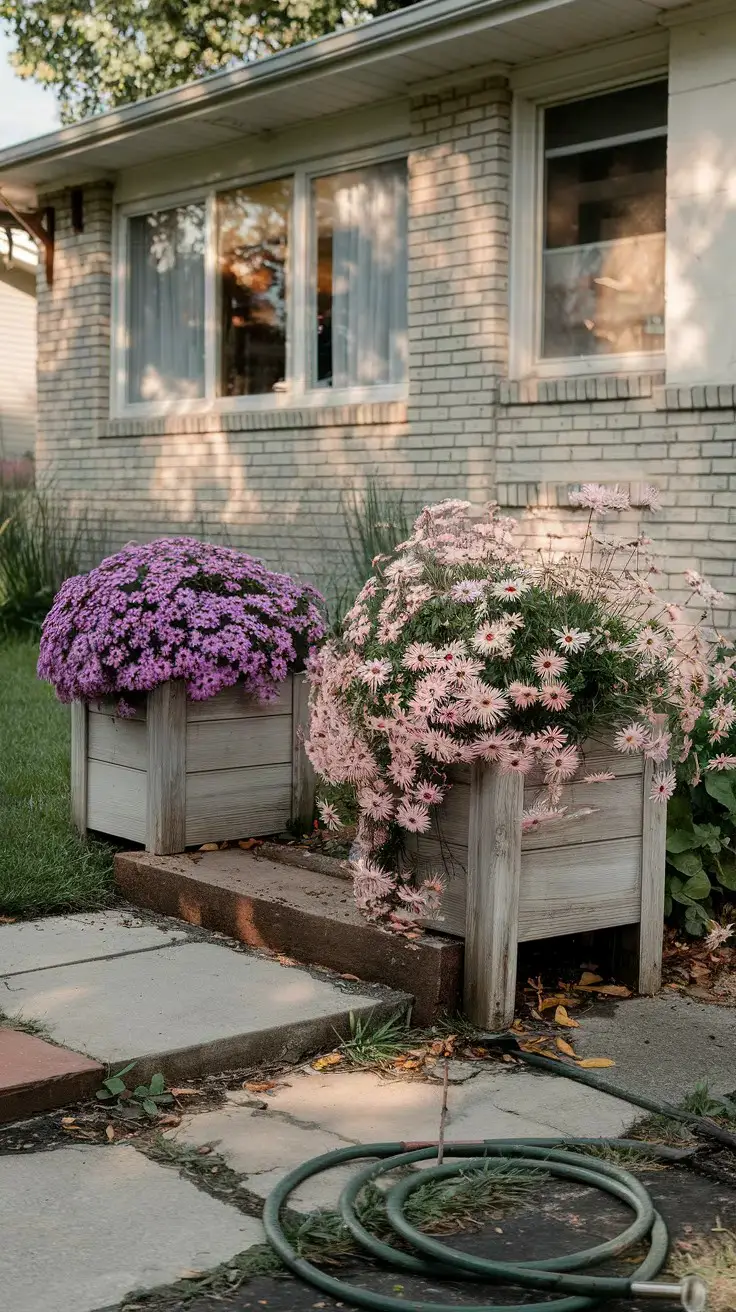
Asters explode with color when everything else fades. Purple varieties shine brightest in full sun. ‘Purple Dome’ stays compact for containers. ‘Wood’s Pink’ cascades over edges. Plant them early summer for fall blooms, or buy blooming plants in September.
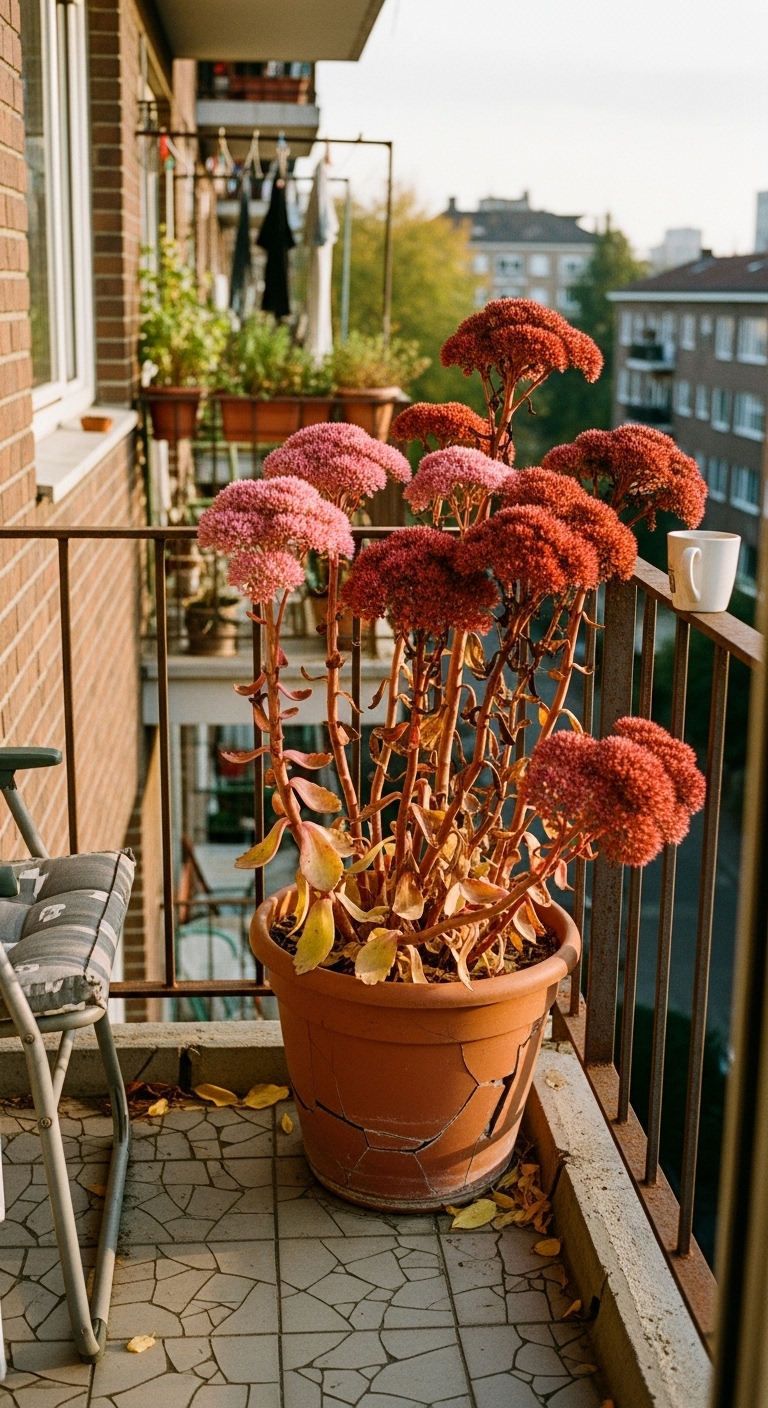
Sedum ‘Autumn Joy’ earns its name. Those broccoli-like heads start pink in late summer. They deepen to rust, then mahogany as temperatures drop. Even dried seedheads look sculptural through winter. Plus, bees and butterflies mob the flowers.

Rudbeckia (Black-Eyed Susan) blooms nonstop until hard frost. ‘Goldsturm’ stays compact with classic golden petals. ‘Cherokee Sunset’ brings oranges and reds. Deadhead for more flowers, or leave seedheads for winter interest.
The Classics, Reimagined
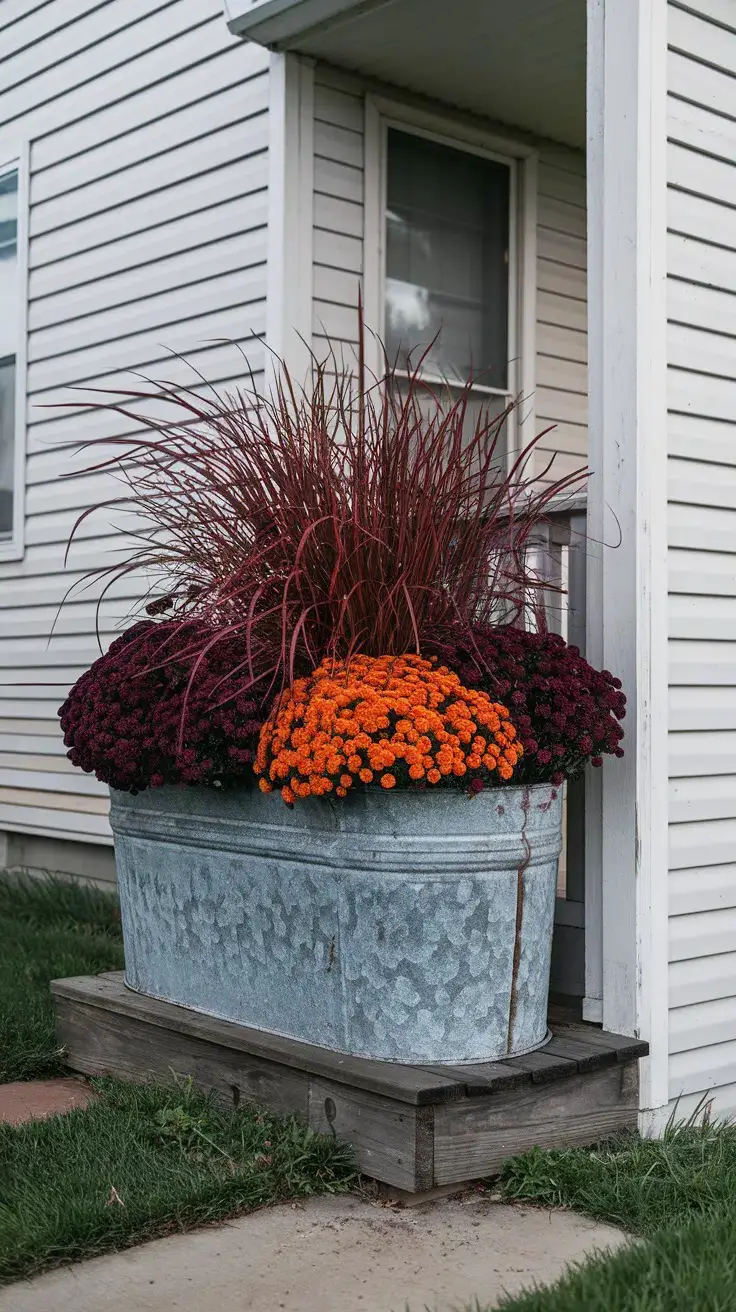
Fall planters with mums don’t have to be boring. Use them structurally, not just as filler. Mass one color for impact. Deep burgundy mums create rich backdrop. Bright orange ones pop against purple grasses. Skip the cushion types—choose decorative varieties with interesting flower forms.
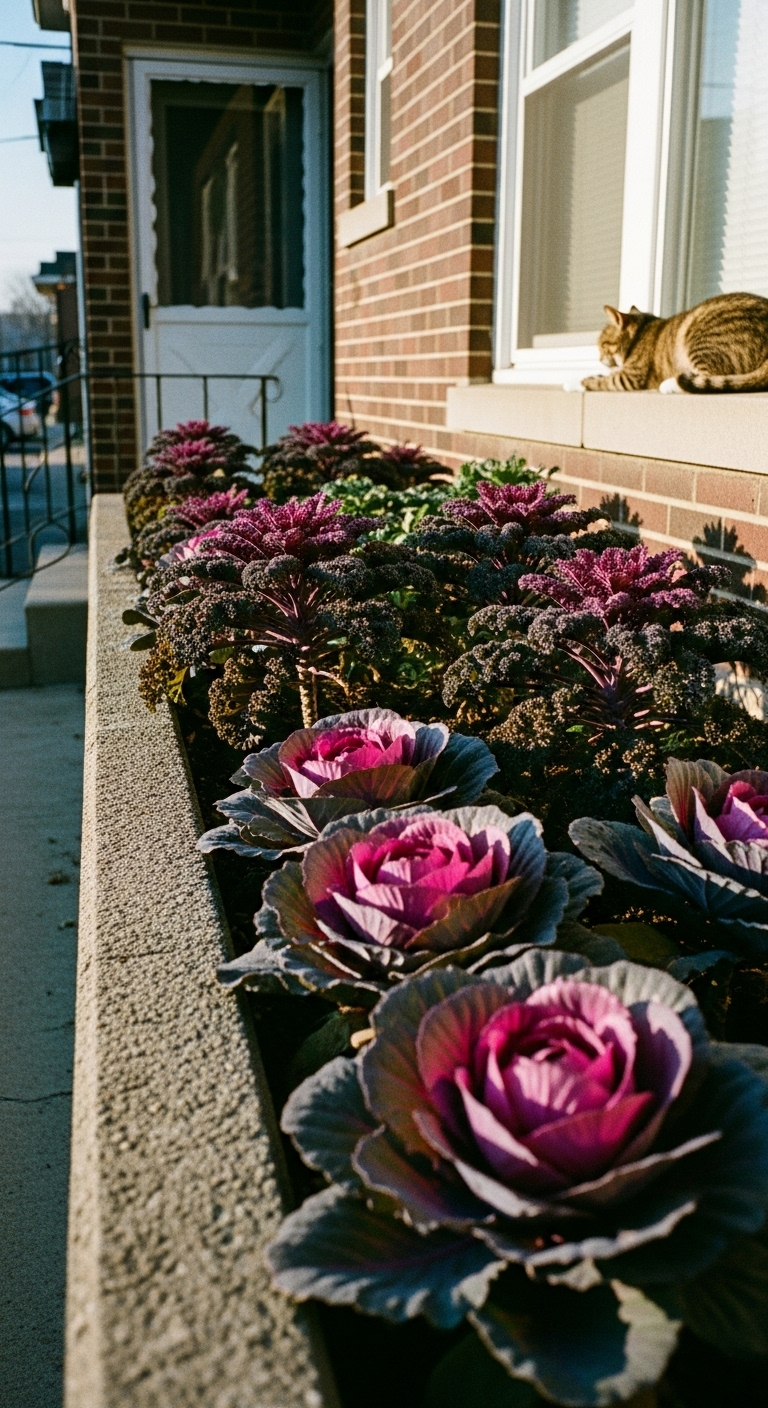
Fall planters with cabbage and kale intensify in full sun. Colors deepen after light frost. ‘Redbor’ kale turns deep purple. ‘Osaka’ cabbages develop pink centers. Use them as living sculptures, not just color spots.
Unexpected Stars
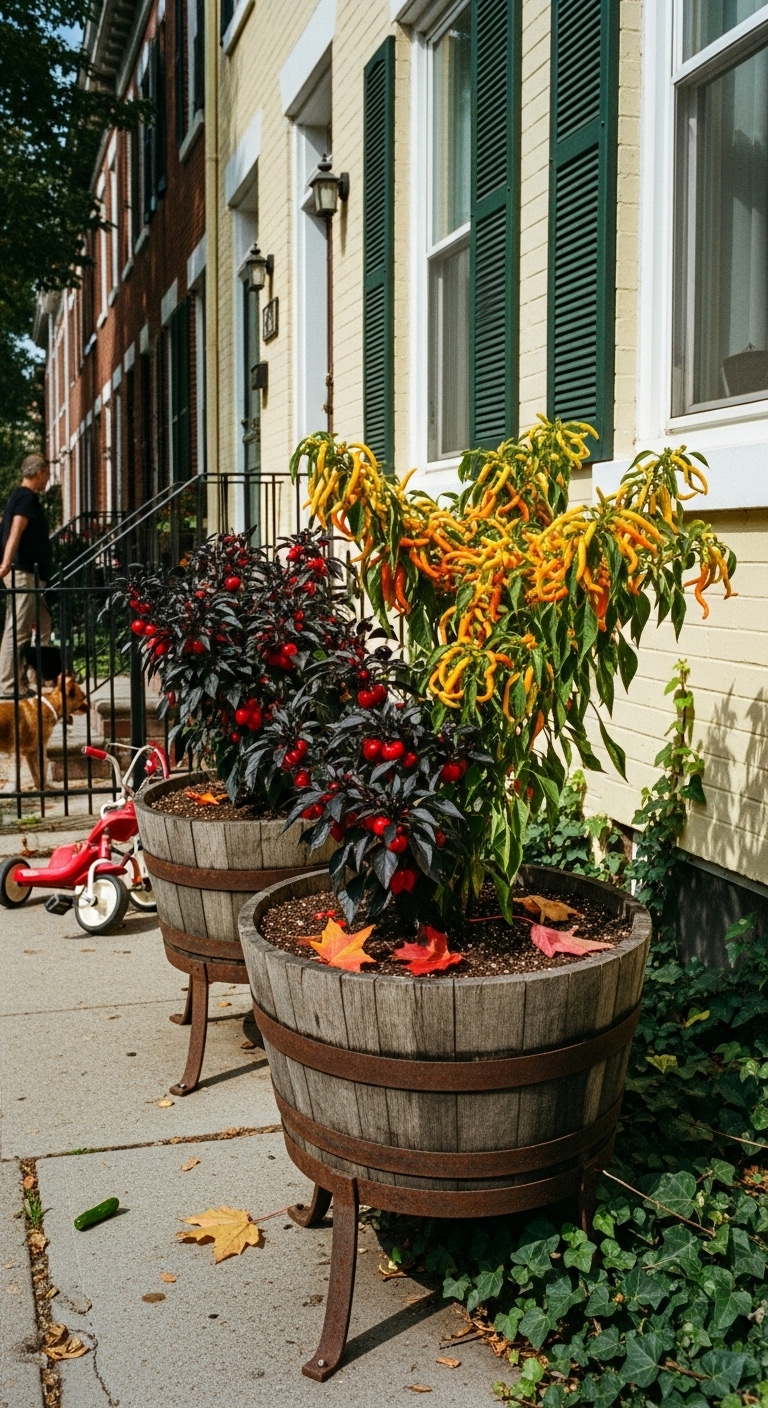
Ornamental peppers bring fire to sun planters. ‘Black Pearl’ has dark foliage and shiny black fruits that turn red. ‘Medusa’ produces twisted yellow and orange peppers. They’re tough, drought-tolerant, and conversation starters.
Design Strategies for Sun-Drenched Locations
Go Big
Large containers make all the difference in full sun. Small pots dry out fast. And nobody wants crispy plants.
Think of it like a water reservoir. More soil equals more moisture storage. Plus, bigger planters create visual weight that matches the intensity of bright sunlight. A tiny pot on a sun-baked patio looks lost. But a substantial container? Now you’re making a statement.
Choose containers at least 18 inches wide. Better yet, go for 24 inches or larger. Your plants will thank you. And your watering can will get a break.
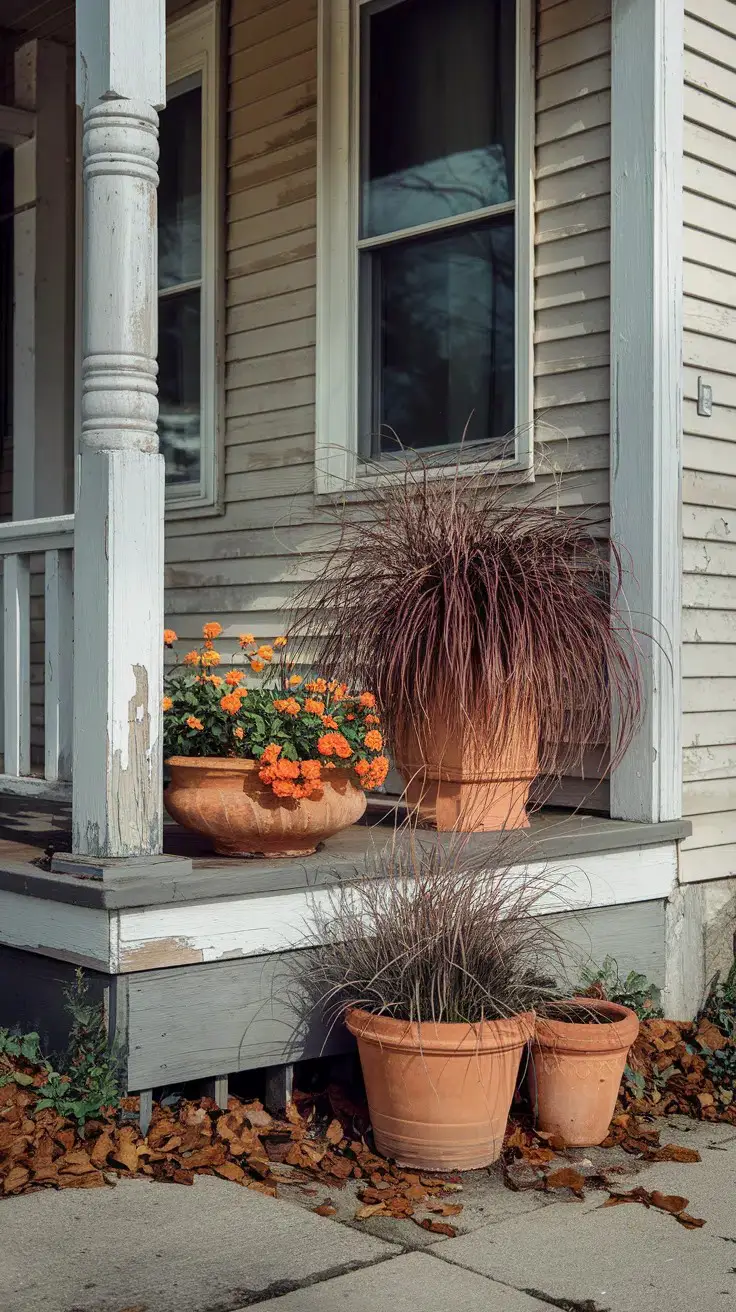
Monoculture Power
Sometimes one plant type beats a mixed arrangement. Monoculture planters create instant drama through repetition.
Fill an entire container with purple fountain grass. Nothing else. The result? Pure elegance. Or pack a planter with ‘Autumn Joy’ sedum. The effect is modern and bold.
Mass plantings work because they eliminate visual competition. Your eye doesn’t jump around. Instead, you appreciate the plant’s form, texture, and color without distraction. And maintenance becomes simpler. One watering schedule. One care routine.
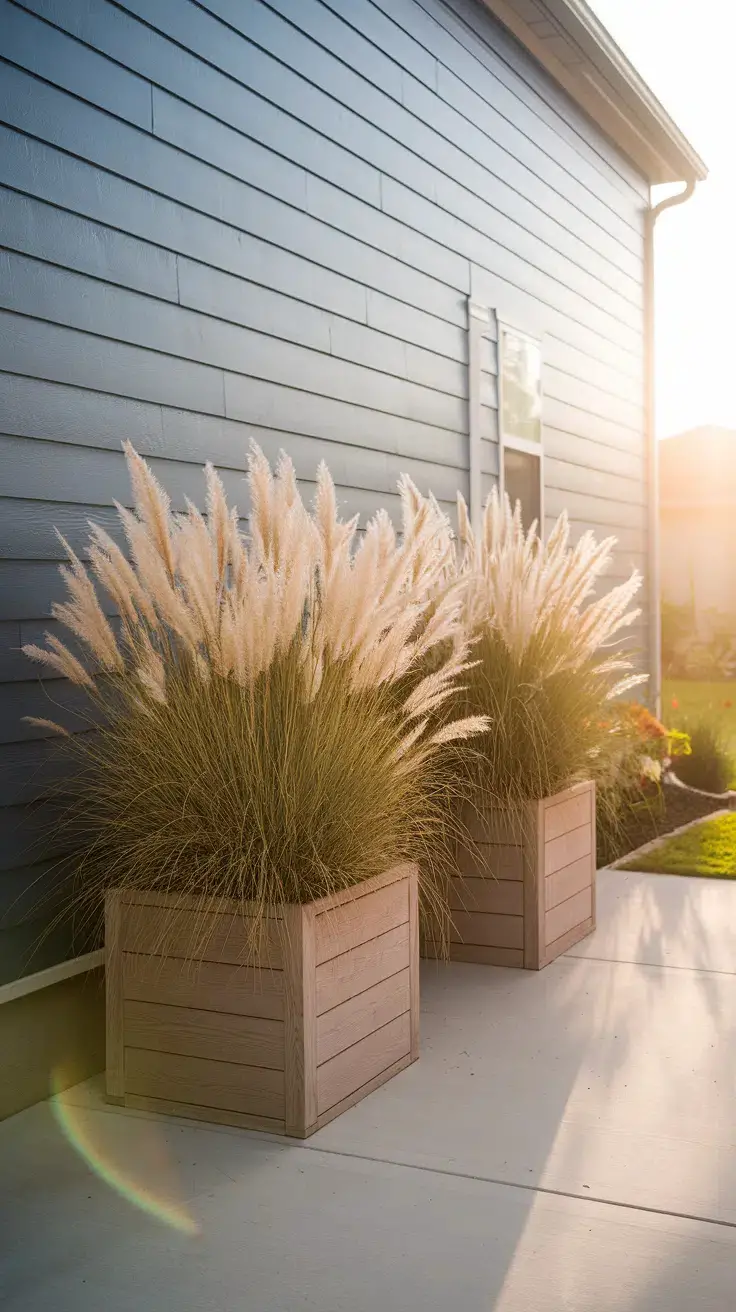
The Importance of Mulch
Mulch isn’t just for garden beds. Your containers need it too.
A two-inch layer of bark mulch or decorative stones serves multiple purposes. First, it slows water evaporation. Critical for sun-baked planters. Second, it prevents soil from splashing onto plants during watering. And third? It gives your arrangement a professional finish.
Dark mulch makes colors pop. Light-colored pebbles create contrast with deep green foliage. Even simple wood chips work. Just avoid letting soil show through.
Artificial Accents for Longevity
Let’s be honest. Full sun is tough on plants. Sometimes you need backup.
Quality artificial elements can fill gaps when real plants struggle. A few silk mums tucked between living plants? Nobody notices. Artificial berries or mini gourds add color that lasts all season. No watering required.
But here’s the trick. Use artificial pieces sparingly. Mix them with healthy, living plants. And choose high-quality pieces that look realistic. Cheap plastic screams fake from across the yard.
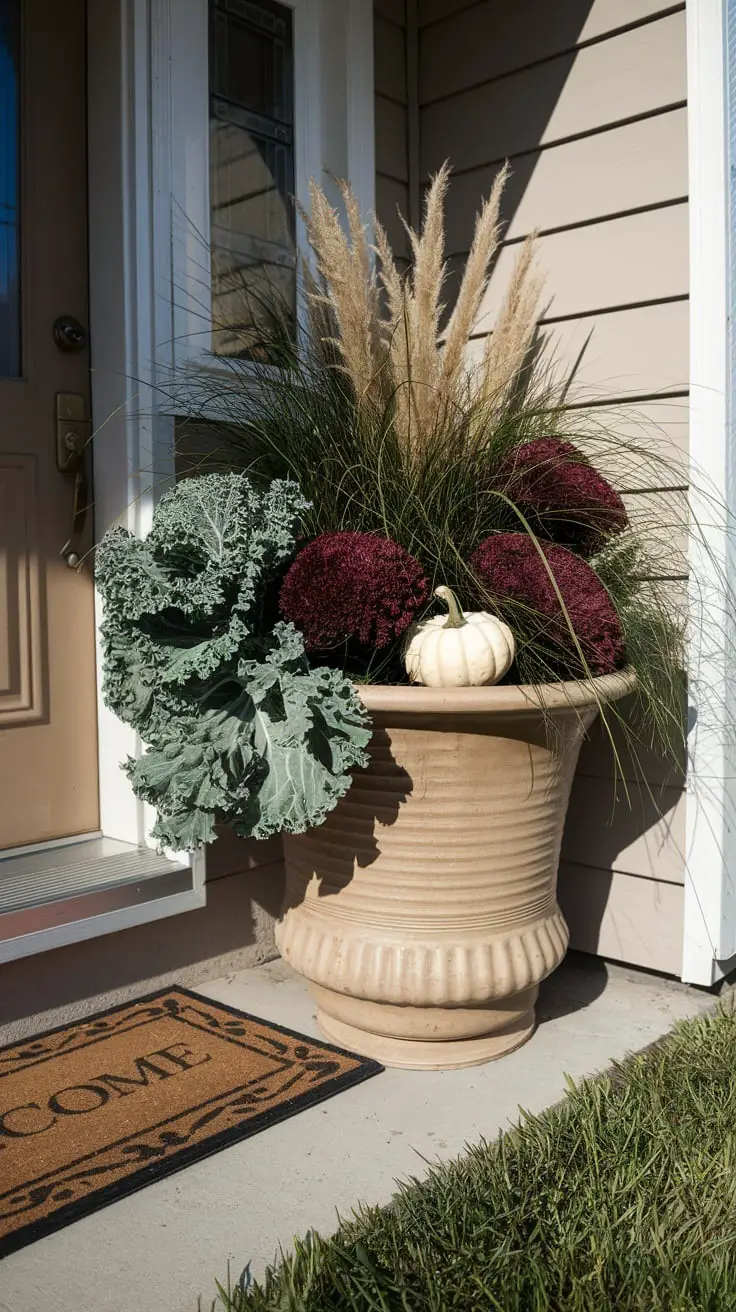
Assembly and Care in a High-Stress Environment
The Right Potting Mix
Standard potting soil won’t cut it for full sun containers. You need a mix that fights back against heat and drought.
Look for blends containing moisture-retaining crystals or coconut coir. These ingredients act like tiny sponges, holding water when plants need it most. Some gardeners add their own water-storing gel crystals to regular potting mix. About one tablespoon per gallon of soil does the trick.
Avoid heavy, clay-based soils. They compact in containers and drain poorly. Your sun-loving plants need good drainage paired with moisture retention. Sounds contradictory? Quality potting mixes achieve both.
Watering is Critical
Full sun means frequent watering. No way around it.
Check soil moisture daily. Stick your finger two inches deep. Dry? Time to water. And water thoroughly. A quick sprinkle won’t reach roots. Water until it runs from drainage holes. Then water a bit more.
Morning watering works best. Plants have all day to absorb moisture before evening. Avoid watering during peak sun hours. Water droplets can magnify sunlight and burn leaves.
Consider self-watering containers or drip irrigation for vacation times. Or ask a neighbor to help. Consistent moisture keeps full sun planters thriving.
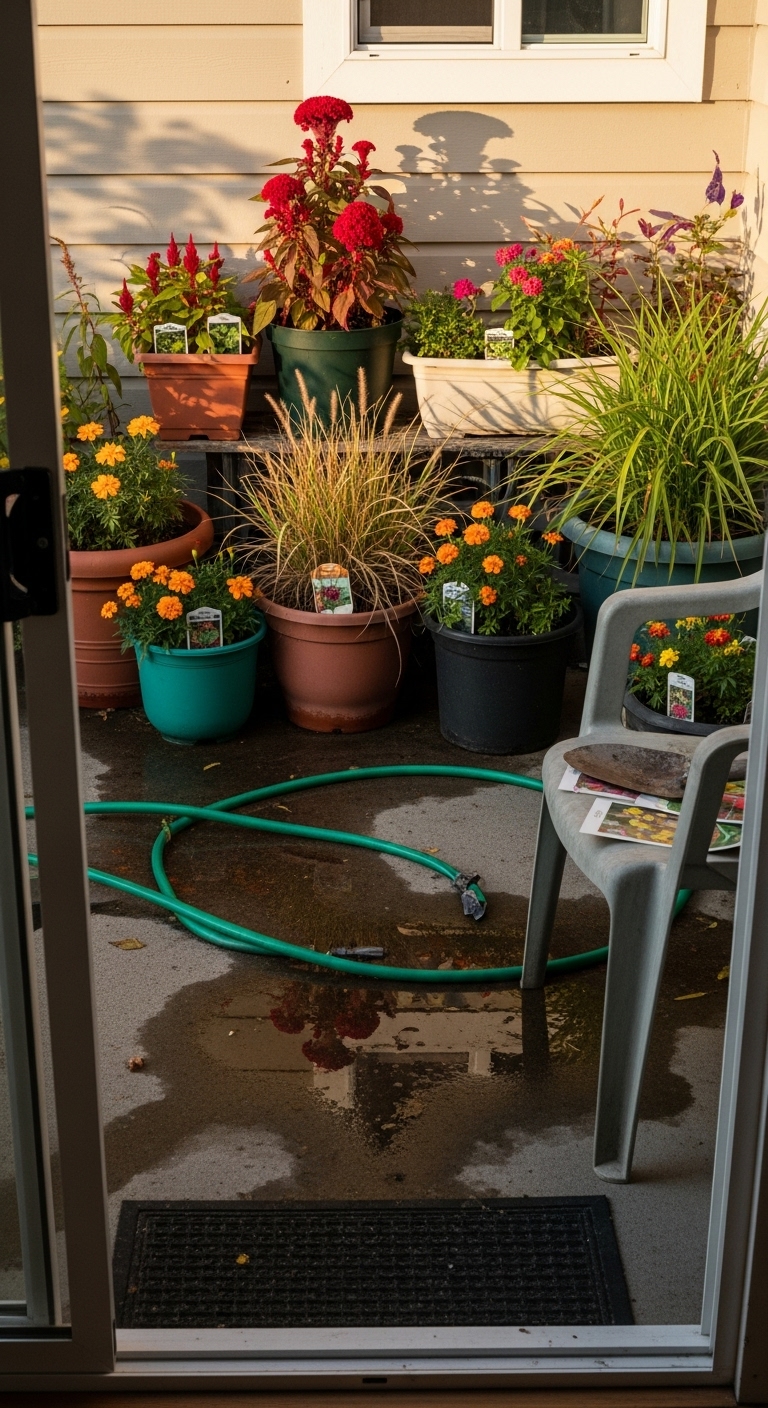
Deadheading for Longevity
Deadheading keeps planters looking fresh. And it’s easier than you think.
Pinch off spent mum blooms with your fingers. Snip faded aster flowers with scissors. Remove them completely, stem and all. New buds form faster when plants don’t waste energy on seed production.
Make deadheading a weekly habit. Five minutes per planter maintains that just-planted look. Skip it, and your arrangement looks tired by October.
Some plants don’t need deadheading. Ornamental grasses and sedums develop attractive seed heads. Leave those alone. But annual flowers? Keep them tidy.
Transitioning to Winter
Don’t rush to empty containers when frost threatens. Many sun-loving plants offer winter interest.
Ornamental grasses turn golden and rustle in winter winds. Sedum seed heads catch snow beautifully. Even dried rudbeckia stems add texture to winter landscapes. These plants earn their keep year-round.
Remove only truly dead annuals. Cut back perennials in spring, not fall. Birds appreciate the seeds. And you’ll appreciate the structure on bleak January days.
Add winter greens around Thanksgiving if you want fresh color. Tuck spruce tips or pine branches between existing plants. But those architectural grasses and perennials? Let them shine through winter.

A Final, Glorious Ovation
Full sun fall planters demand attention. And they deserve it.
We’ve moved beyond timid arrangements that wilt at the first sign of heat. Bold combinations of grasses, perennials, and unexpected accents create planters that celebrate autumn’s intensity. Purple fountain grass waves like victory flags. Sedums glow like embers. Rudbeckias shine like captured sunlight.
Remember the core principles. Choose plants that worship the sun. Go big with container size. Water religiously. And don’t fear dramatic gestures like monoculture plantings or strategic artificial additions.
Your sunniest spots deserve more than struggling shade plants. They deserve compositions that match the power of autumn light. Planters that stop neighbors in their tracks. Arrangements that transition gracefully from September’s warmth through winter’s chill.
Stand back and admire your work. You’ve created living sculptures that capture the season’s final burst of energy. A glorious ovation indeed.
